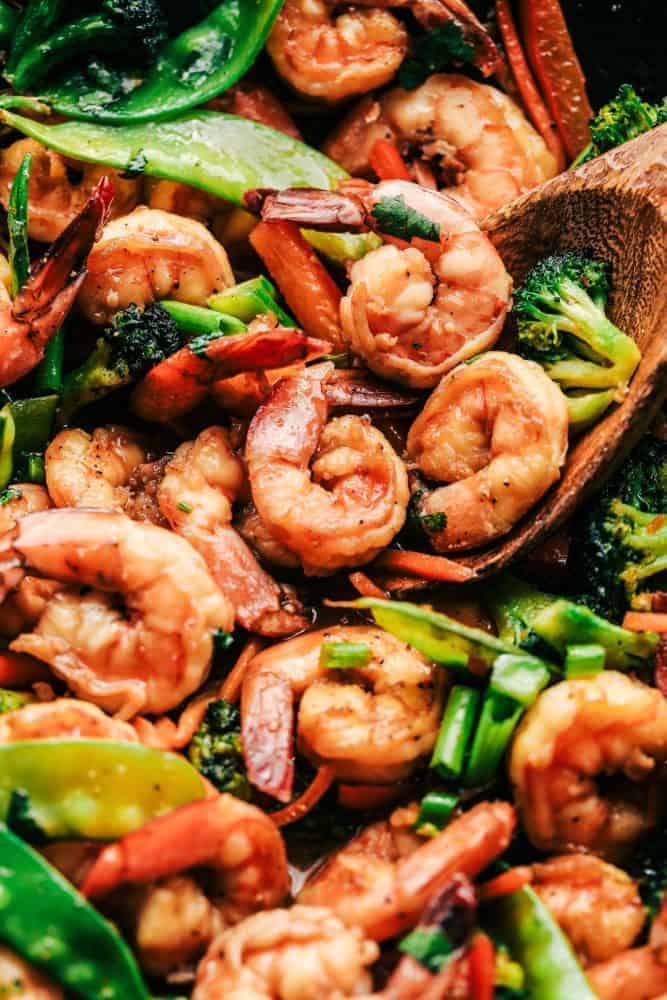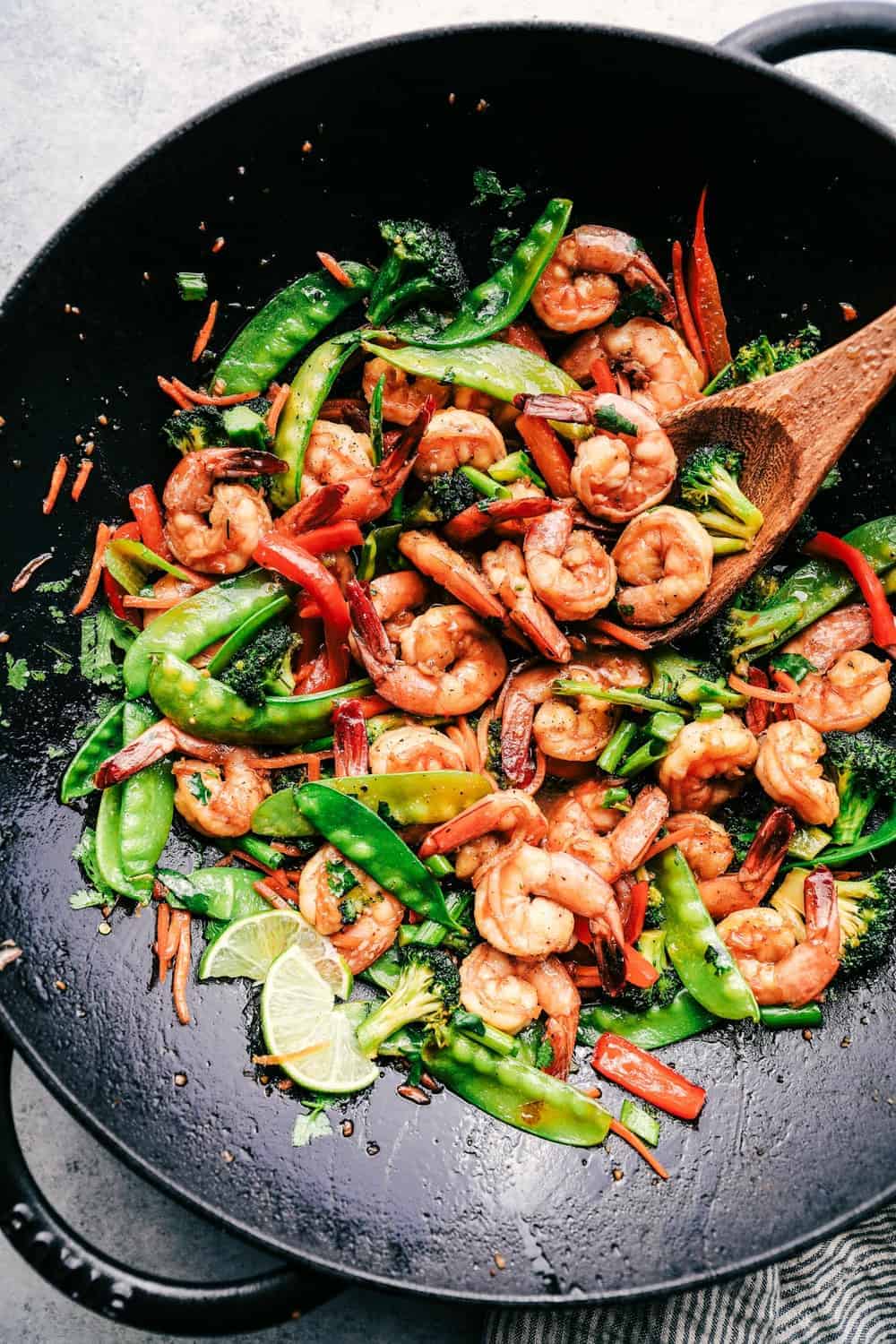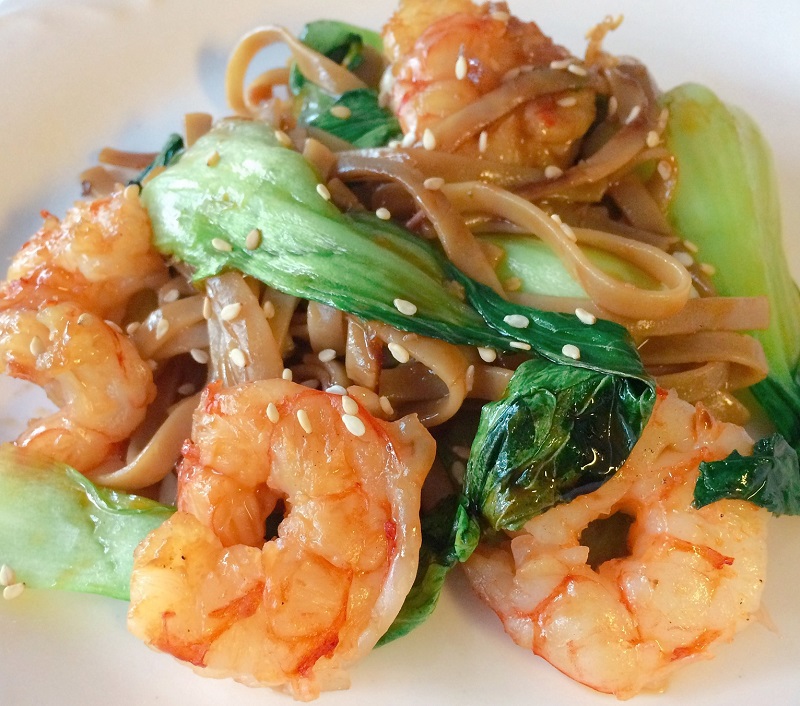Video tentang A Deep Dive into Shrimp Stir-Fry: Techniques, Variations, and the Art of the Perfect Bite
A Deep Dive into Shrimp Stir-Fry: Techniques, Variations, and the Art of the Perfect Bite

Shrimp stir-fry, a culinary chameleon, adapts effortlessly to diverse palates and pantries. This seemingly simple dish, a staple in countless cuisines across the globe, offers a canvas for creativity, allowing for endless variations in flavor profiles, textures, and ingredient combinations. From the fiery kick of a Szechuan shrimp stir-fry to the delicate sweetness of a Thai-inspired version, the versatility of shrimp makes it a perfect centerpiece for this quick, healthy, and undeniably delicious meal.
This article will explore the art of creating a perfect shrimp stir-fry, delving into the essential techniques, ingredient choices, and variations that elevate this dish from a weeknight dinner staple to a culinary masterpiece.
Understanding the Fundamentals: Technique is Key
The magic of stir-frying lies in its speed and precision. The high heat employed in this cooking method ensures that ingredients are cooked quickly, retaining their crispness and vibrant colors. Here’s a breakdown of the crucial steps:
-
Prep Work is Paramount: Before you even turn on the stove, meticulous preparation is vital. Shrimp should be thoroughly cleaned, deveined (unless using pre-deveined shrimp), and patted dry. This ensures even cooking and prevents steaming. Vegetables should be uniformly cut into bite-sized pieces, ensuring even cooking and appealing presentation. Having all ingredients measured and readily available before you begin is key to maintaining the fast pace of stir-frying.
-
Wok Hei: The Soul of Stir-Fry: Wok hei, a Cantonese term often translated as "breath of the wok," refers to the smoky, slightly charred flavor imparted to ingredients during stir-frying. Achieving wok hei requires a very hot wok or large skillet, preferably seasoned cast iron or carbon steel. The intense heat creates a Maillard reaction, browning the ingredients and developing complex flavors.

-
Oil Selection Matters: High-smoke-point oils, such as peanut oil, canola oil, or vegetable oil, are ideal for stir-frying. These oils can withstand the high heat without breaking down or imparting undesirable flavors. A generous amount of oil is crucial for proper searing and preventing sticking.

Order of Operations: The order in which ingredients are added to the wok is crucial. Heartier vegetables, like broccoli or carrots, should be added first, followed by quicker-cooking vegetables like bell peppers and mushrooms. Protein, in this case, shrimp, is usually added towards the end, as it cooks rapidly. Sauces are added at the very end, allowing them to coat the ingredients without overcooking.
-
The Art of the Toss: The constant tossing and stirring of ingredients in the wok is essential for even cooking and the development of wok hei. Use a spatula or wok spoon to continuously move the ingredients, ensuring that they are all exposed to the intense heat.

Ingredient Exploration: Building Flavor Profiles
While shrimp forms the heart of this dish, the supporting cast of ingredients plays a crucial role in shaping the final flavor profile.
-
Shrimp Selection: The size and type of shrimp you choose will impact the texture and cooking time. Larger shrimp require slightly longer cooking times, while smaller shrimp cook more quickly. Frozen shrimp are perfectly acceptable, but ensure they are thoroughly thawed and patted dry before cooking.
-
Vegetable Variety: The possibilities are endless! Classic choices include broccoli, carrots, snap peas, bell peppers (red, yellow, or orange), mushrooms, onions, and zucchini. Consider incorporating seasonal vegetables for optimal freshness and flavor. Don’t be afraid to experiment with less common vegetables like bok choy, asparagus, or gai lan.
-
Sauce Symphony: The sauce is the star of the show, binding the flavors and creating a harmonious balance. Classic stir-fry sauces often incorporate soy sauce, oyster sauce (for a richer umami flavor), rice vinegar, sesame oil, ginger, garlic, and cornstarch (for thickening). However, the possibilities are vast. You can explore sweet chili sauce, hoisin sauce, peanut sauce, or even a simple lemon-garlic sauce, depending on your desired flavor profile.
-
Spice and Flavor Enhancers: Chili garlic sauce, red pepper flakes, or fresh chilies can add a fiery kick. Fresh ginger and garlic are essential for aromatic depth, while sesame seeds and chopped scallions provide a finishing touch.
Variations on a Theme: Exploring Global Influences
The beauty of shrimp stir-fry lies in its adaptability. Here are a few variations inspired by different cuisines:
-
Szechuan Shrimp Stir-Fry: This fiery version incorporates Sichuan peppercorns for a unique numbing sensation, alongside generous amounts of chili garlic sauce and fermented black beans.
-
Thai Shrimp Stir-Fry: This fragrant stir-fry features fish sauce, lime juice, lemongrass, galangal, and chilies for a vibrant, tangy flavor profile. Often includes vegetables like bell peppers, onions, and snow peas.
-
Garlic Butter Shrimp Stir-Fry: A simpler, more Westernized version, this stir-fry uses garlic, butter, and white wine for a rich and savory flavor. Parsley or chives make a great garnish.
-
Sweet and Sour Shrimp Stir-Fry: A classic combination, this stir-fry uses a sweet and sour sauce made with sugar, vinegar, and ketchup, balancing the sweetness with the tanginess of the vinegar.
-
Kung Pao Shrimp Stir-Fry: This variation incorporates peanuts, dried chilies, and a savory-sweet sauce for a satisfying and flavorful experience.
Beyond the Basics: Tips and Troubleshooting
-
Don’t Overcrowd the Wok: Overcrowding the wok will lower the temperature, resulting in steamed instead of stir-fried ingredients. Work in batches if necessary.
-
Properly Thicken the Sauce: Cornstarch slurry (cornstarch mixed with cold water) is crucial for thickening the sauce. Add the slurry slowly while stirring constantly to prevent lumps.
-
Seasoning is Crucial: Taste and adjust seasoning throughout the cooking process. Don’t be afraid to experiment with different flavor combinations.
-
Garnish for Presentation: Fresh herbs, sesame seeds, or chopped scallions can elevate the visual appeal of your dish.
Conclusion: Embracing the Culinary Journey
Shrimp stir-fry is more than just a recipe; it’s a culinary journey that invites experimentation and creativity. By mastering the fundamental techniques and exploring the diverse range of flavor profiles, you can create a dish that is not only delicious but also a reflection of your personal culinary style. So, gather your ingredients, fire up your wok, and embark on this exciting culinary adventure – the perfect shrimp stir-fry awaits!

Penutup
Therefore, we hope this article has provided valuable insights on A Deep Dive into Shrimp Stir-Fry: Techniques, Variations, and the Art of the Perfect Bite. We hope you found this article informative and helpful. See you in our next article!

